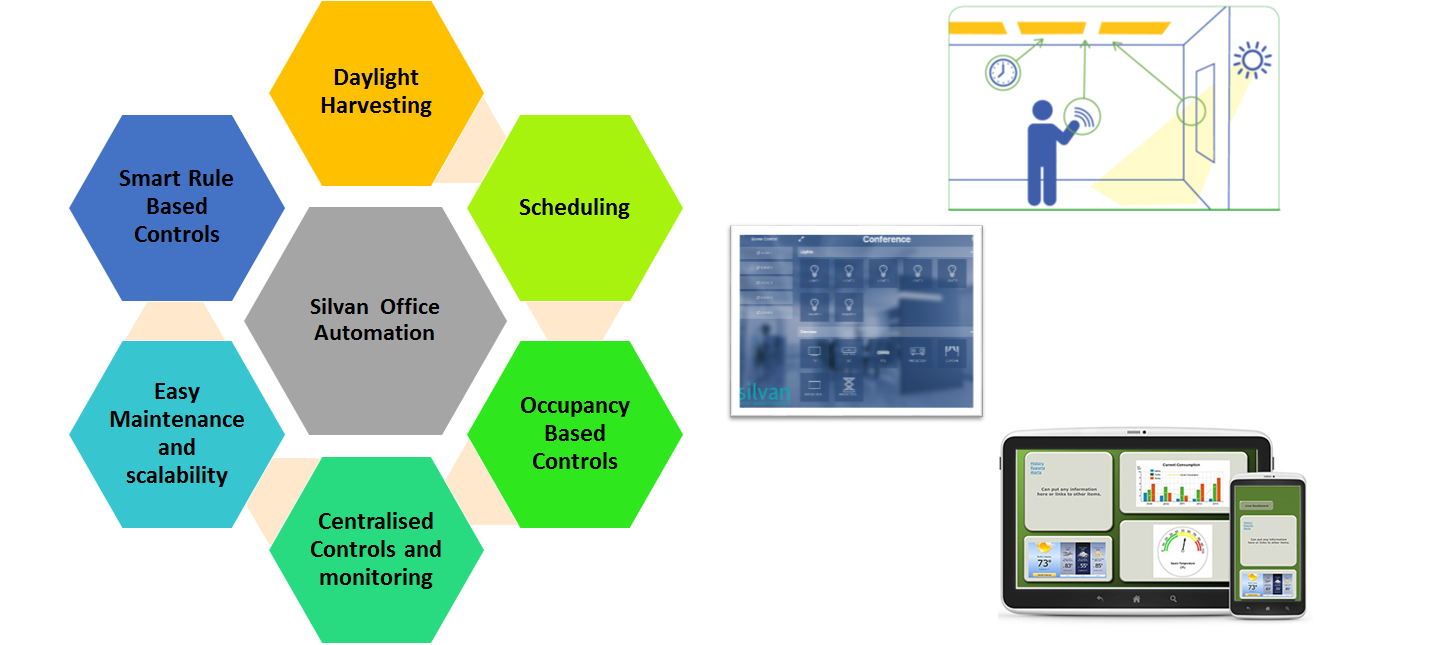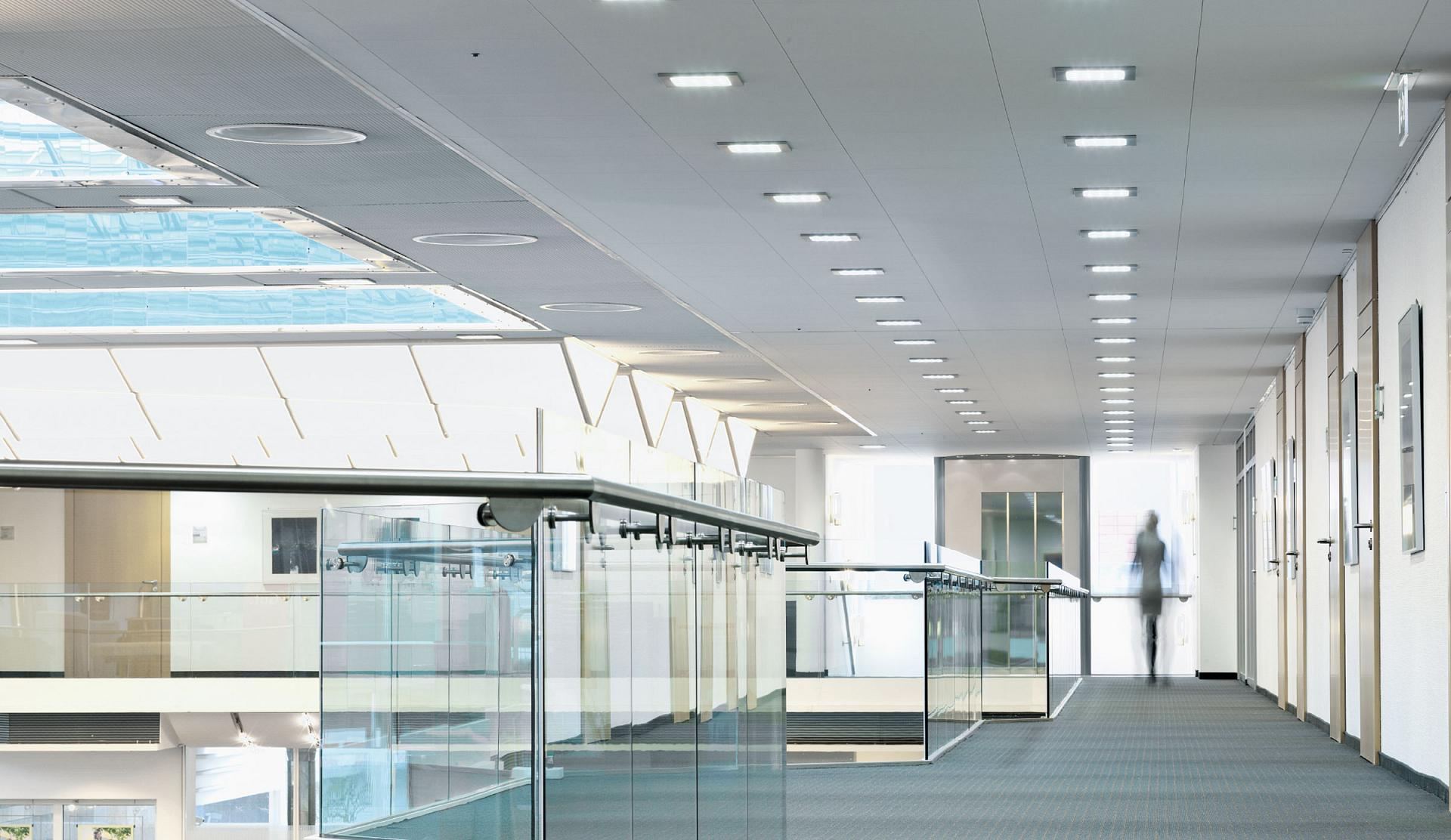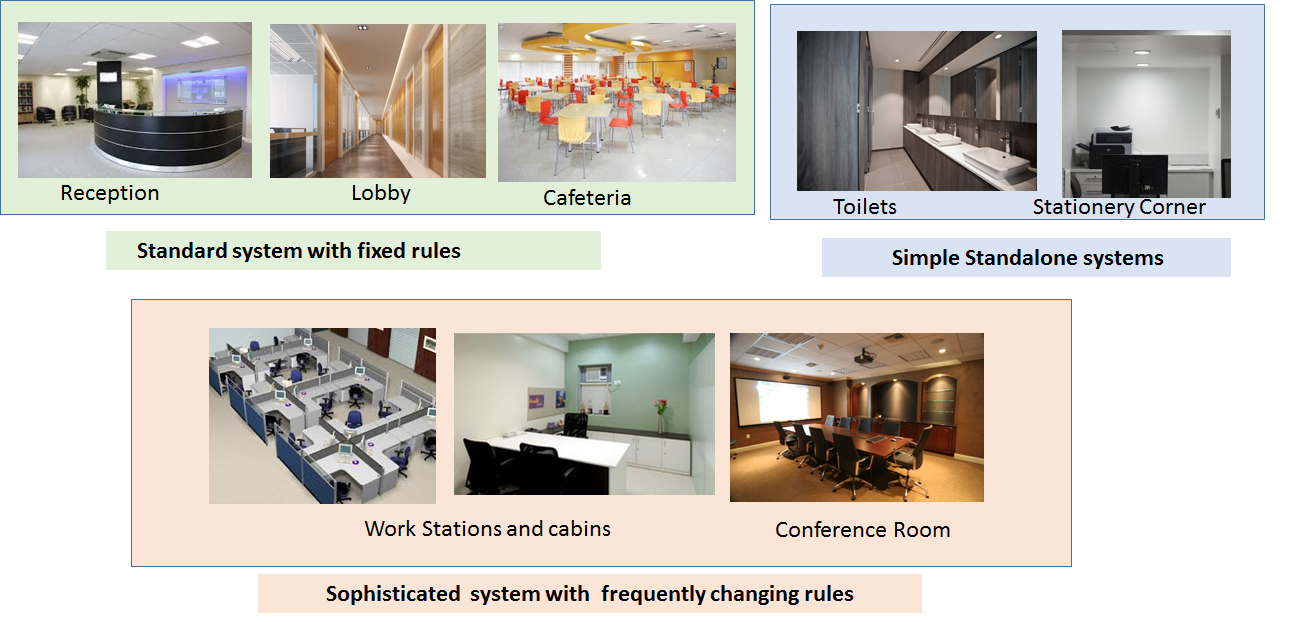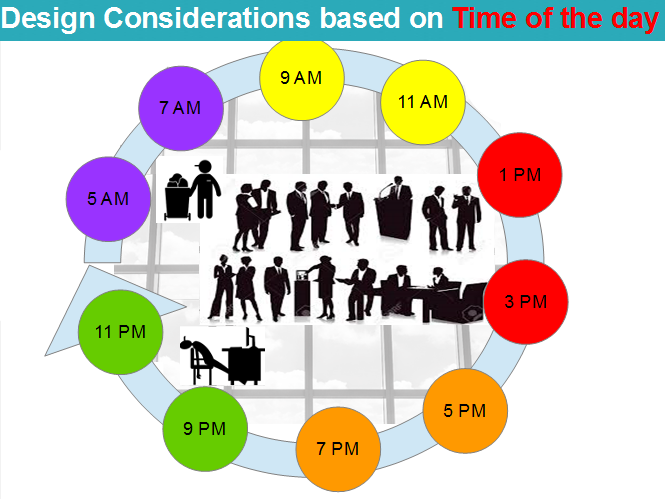Smart Office Lighting & Energy Management
Why Lighting and Devices Automation in offices ?
- Save Energy and Go Green - Need of hour to reduce carbon foot prints
- Reduce Electricity Bills – Business purpose
- Lighting System - which creates good ergonomics – Increasing productivity
- Easy Maintenance – easy for facility managers to pin-point issues and fix them
- Convenience and comfort at work place – Employee Satisfaction

Lights, AC and Blinds Automation
Lights Automation Controls- Lighting is one of the most important factors to be considered in work place ergonomics nowadays.
- Since amount of light that enters a place changes every hour due to the sunlight light or ambience light, it is very important that daylight and artificial light create a right combination of illumination for the occupant to work comfortably.
- Automation thus plays an important role in day light harvesting.
- Occupant responsive technology offers both energy savings potential and the opportunity to enhance employee satisfaction. Occupant responsive automation technology enables controls based on following parameters
- Occupancy based
- Ambience light based
- Timer based
- The above can then be combined with more sophisticated rules based intelligent systems. It consists of Lights, dimmable ballasts, sensors, and intelligent light control modules and controller.
- Climate control is combination of AC temperature control and Blinds Controls (Warmth coming through windows)
- Automation with AC and Blinds controls for setting temperature based on occupancy, time of the day and amount of heat being received from outside helps in energy savings as well as maximizing user experience without much fiddling with AC remote all the time.
- Rules can be applied to set the temperature to reflect the perfect climate under different circumstances.

Energy Management using Silvan’s Automation Technology
- In most offices lighting accounts for 35-45% of annual electricity bills.
- As energy costs rise creating an energy efficient workplace is top priority for most businesses.
- The automated features implemented in offices save energy while making the work place more comfortable and productive.
- Using Dimming features of lights is the 1st step towards energy management.
- The lights turn on as soon as we enter the conference room and turn off again after we leave. The sensors lower the blinds when the sun is brightest or turn off the AC when outside temperature goes below a certain point.
- With heating, cooling and electricity constantly running, it can really burden the system, planet and our pockets.
- By automating the work place, we can make sure that energy usage stays within certain set parameters and help us in reducing carbon footprints.

Silvan’s Revolutionary IOT Lighting Management
- Distributed IoT nodes – no single point of failures
- Cloud enabled yet local : Power of cloud, limited internet dependence during operation
- Augmented internal IFTTT – Rules downloaded to IoT nodes for offline processing
- Advanced Scheduling:
- NTP enabled RTC (Real Time Clock) maintains daily and one-time trigger scheduled within IoT nodes.
- The schedule triggers are not internet dependent.
- Ability to connect sensor of choice to IoT nodes for rules augmentation : ambient light, motion etc
- All this on fundamental Silvan’s philosophy of fault-tolerance and simplicity
- Seamless extensions for integration with blinds control and AC control for daylight harvesting and augmented energy management
- Factory built-in Smart Energy Management rule

Areawise Automation Needs
Each area in office needs different kind of ambience lights and is used by different people or set of people together. We divide the areas into 3 kinds as per the automation requirements and accordingly the rules of the areas are written. Imagine this rule for the Area like Corridor
- Corridor is having a Light with dimming level (very low) is determined by facility manager at a particular time of day.
- Someone enters corridor, and upon sensing an occupancy the area light level is adjusted to another level (medium).
- Then the occupant adjusts the light level according to her convenience to desired level (high).
- And when occupant leaves the place, the light level reaches the level defined by facility manager as per the time of the day. (If it is night now, it reaches low and not very low as earlier during day time).

Energy conservation and automation as per the time of the day
The light and heat entering the office space as well as requirement of occupants vary drastically throughout the day and hence a good design of automation system allows the energy management very smartly using the devices to work at their optimum level. Just imagine
5AM -7 AM - Office getting ready.Open the shades. Dim lights in corridors and lobby. AC Switch on in reception area.
9AM – 11 AM - Arrival of staff Enable perimeter lighting and shades for daylight harvesting. Set occupancy based lights to lesser time period. Meetings starting – align cabin lights and AC to set rules. Switch off all unused lights
1PM – 3PM - Afternoon time. Set the shades to utilise the light coming from outside but avoiding warmth to optimise usage of lights and AC. Set Cafeteria lights for lunch time Lobby and corridor areas lights off.
5PM-7 PM - Evening – Sunset time , set shades to avoid glare from setting sun from west. Lobby and corridor lights ON at lowest dimming level
9PM-11PM - Most staff has left office. Switch off lights of all un occupied spaces. AC shut down in cabins and workstation areas Lobby and corridor lights to higher level of luminance.
